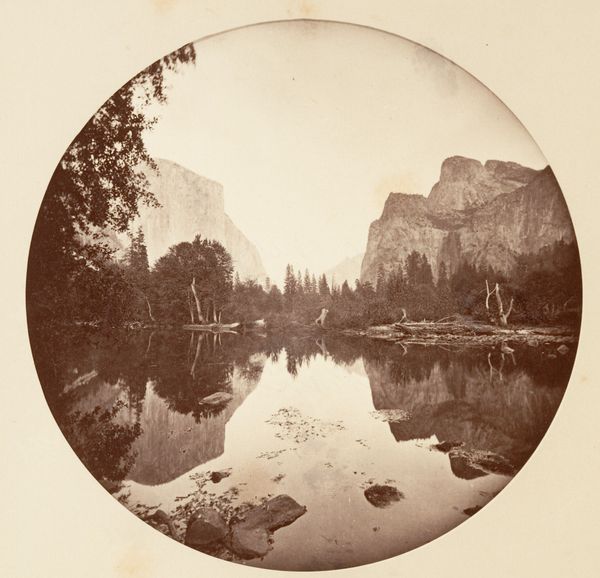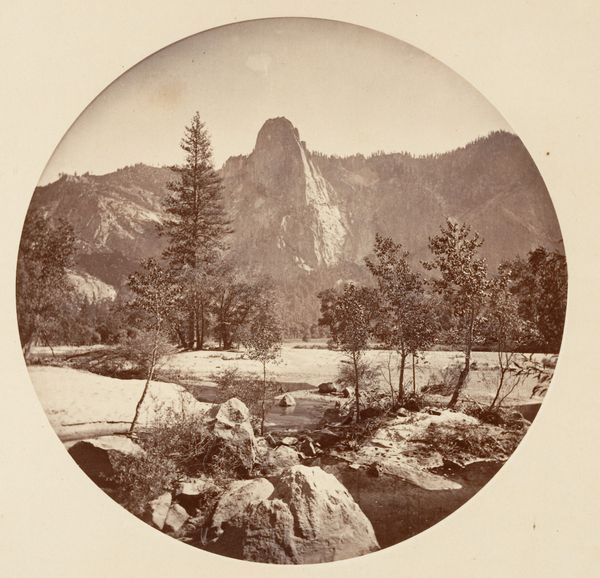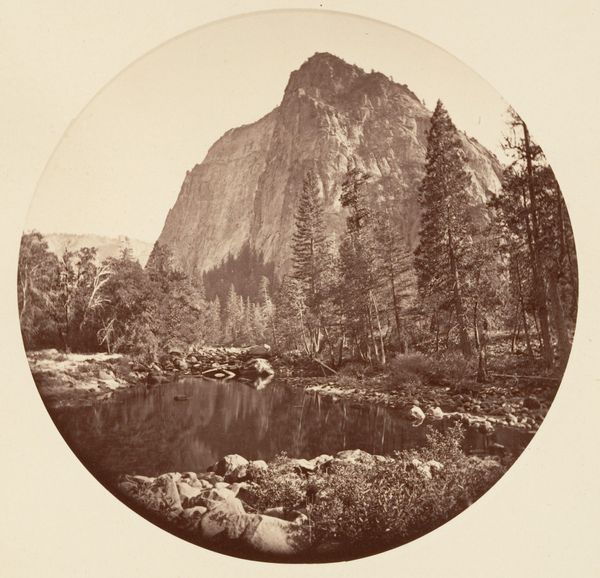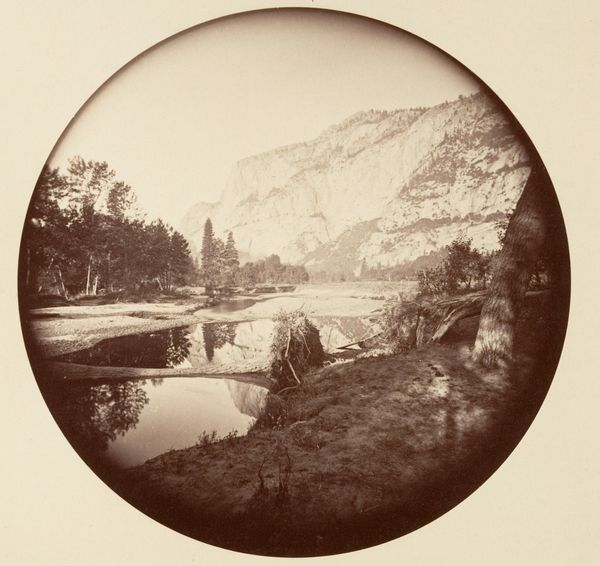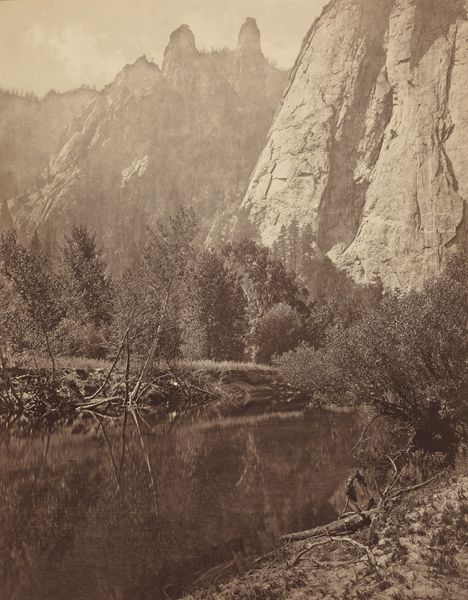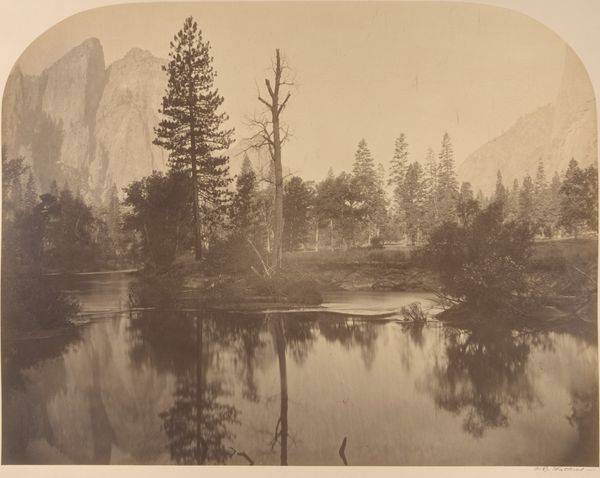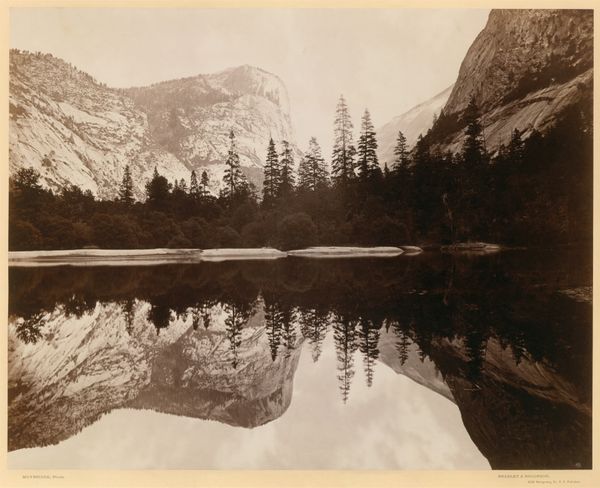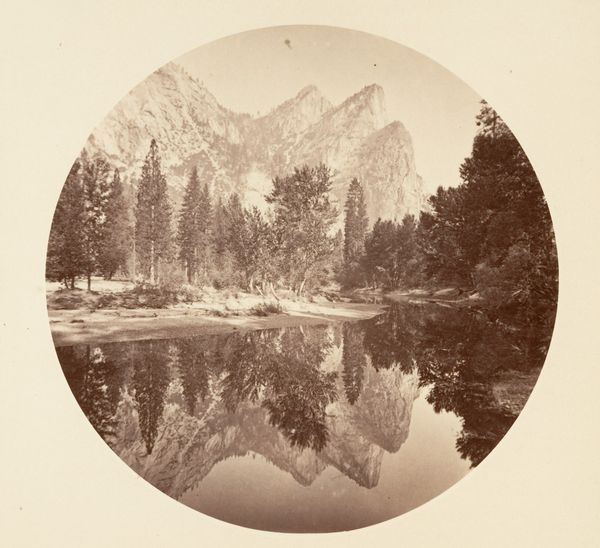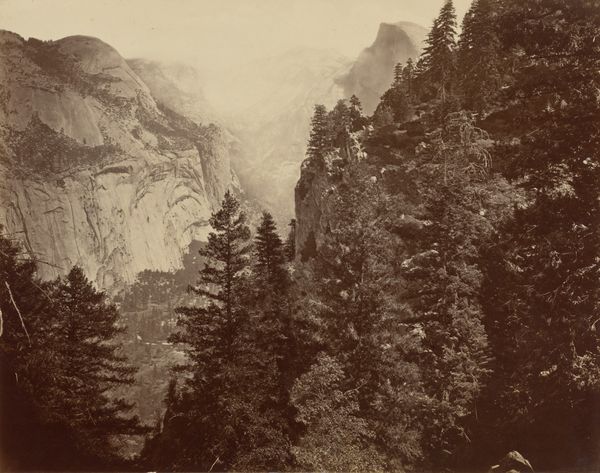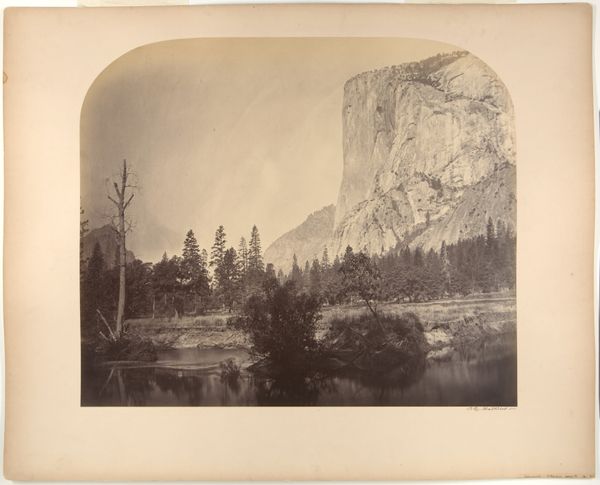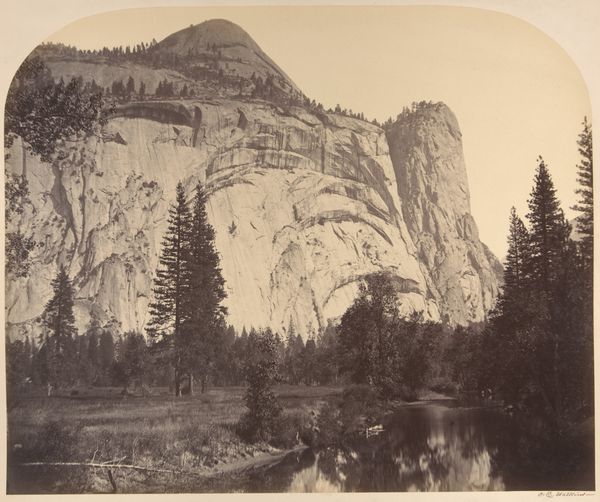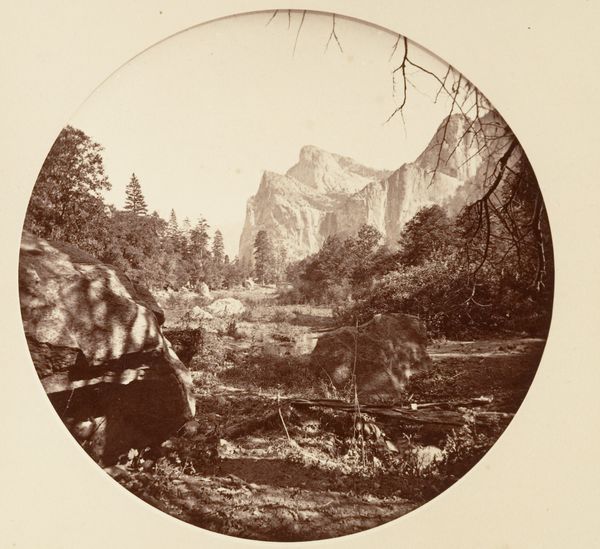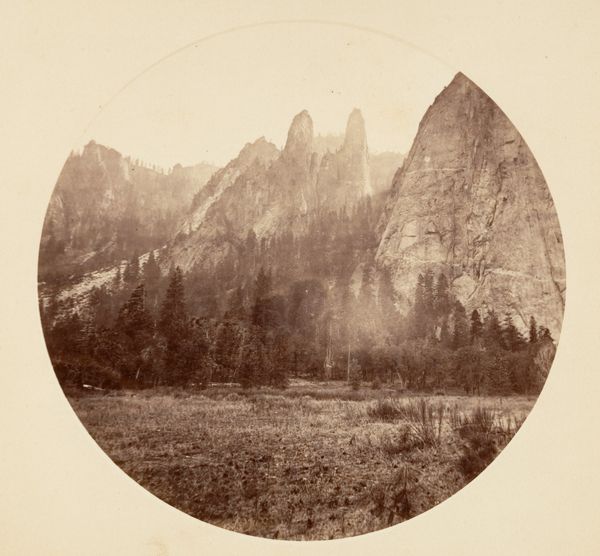![[Yosemite National Park, California] by Carleton E. Watkins](/_next/image?url=https%3A%2F%2Fd2w8kbdekdi1gv.cloudfront.net%2FeyJidWNrZXQiOiAiYXJ0ZXJhLWltYWdlcy1idWNrZXQiLCAia2V5IjogImFydHdvcmtzL2ZhNDM4YWY5LTFkNmQtNDM0Yi1iZGM0LTM1YTg4NDU0N2Y4OS9mYTQzOGFmOS0xZDZkLTQzNGItYmRjNC0zNWE4ODQ1NDdmODlfZnVsbC5qcGciLCAiZWRpdHMiOiB7InJlc2l6ZSI6IHsid2lkdGgiOiAxOTIwLCAiaGVpZ2h0IjogMTkyMCwgImZpdCI6ICJpbnNpZGUifX19&w=3840&q=75)
Dimensions: Image: 12.5 x 12.5 cm (4 15/16 x 4 15/16 in.), circular Album page: 24 x 25.1 cm (9 7/16 x 9 7/8 in.)
Copyright: Public Domain
Curator: Here, we're looking at Carleton Watkins' "[Yosemite National Park, California]," a daguerreotype probably made between 1876 and 1880. It's currently housed here at the Metropolitan Museum of Art. Editor: It's breathtaking! The first thing that strikes me is the circular format and the remarkable reflection in the water, which nearly perfectly mirrors that monumental rock formation. The tone is a beautiful sepia; it creates a contemplative mood. Curator: Absolutely. This work, made through photography, participates in and interrogates landscape aesthetics of the Hudson River School. Watkins produced it during a fraught historical moment in the American West, reflecting upon the violent expansion and settlement onto Indigenous lands and the problematic concept of preservation that dispossessed Native people of their homes. Editor: So you're saying it's not merely a straightforward celebration of nature’s grandeur? How does the formal composition relate to this social critique? Curator: In some ways, the composition participates in the rhetoric of manifest destiny, showcasing the sublime power of the land as something to be conquered or controlled. However, by capturing the land at a particular moment in its evolution, as something fluid and mutable rather than static, it also poses a complex problem. We must consider, though, how the camera, even as a mechanical device, plays a subjective role here. Who gets to determine this land is "worth" saving? For whom? Editor: That’s compelling. The circular composition, then, can also be read as containing and controlling that natural scene—putting a frame around nature, literally. A bit like owning it. Curator: Precisely! We should remember that art never exists in a vacuum; rather, it interacts with and responds to socioeconomic contexts of the time. Watkins’ photographs had enormous political sway. Legislators debated preserving the space as a park because of Watkins. Editor: It gives new depth to the word landscape, that's for sure! Thank you, the dialogue and nuance in Watkins’s view are really important to unpack. Curator: Of course! It challenges our conventional understandings of even seemingly idyllic images.
Comments
No comments
Be the first to comment and join the conversation on the ultimate creative platform.
